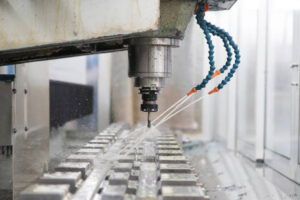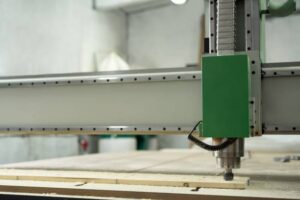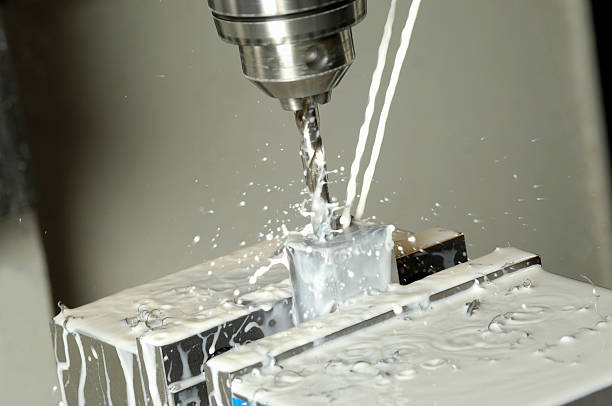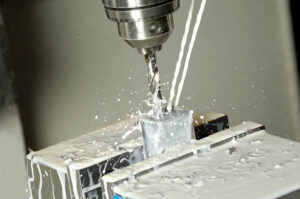Spindle Motors vs Induction Motors: Key Differences for CNC Machines
Are you confused about the differences between spindle motors and induction motors for your CNC machine? You’re not alone! This comprehensive guide will break down the key distinctions, helping you make an informed decision for your woodworking projects. Whether you’re a hobbyist or a professional, understanding these motor types is crucial for optimizing your CNC machine’s performance.
What Exactly is a Spindle Motor?
A spindle motor is a specialized type of motor designed specifically for CNC machines. But what makes it so special?Spindle motors are:
- Built for high-speed operation
- Designed to maintain precision at various speeds
- Often integrated directly into the spindle assembly
These characteristics make spindle motors ideal for CNC applications where accuracy and speed are paramount.
How Does an Induction Motor Work?
Induction motors, also known as asynchronous motors, are workhorses in many industrial applications. But how do they function?Induction motors operate on the principle of electromagnetic induction:
- They use alternating current to create a rotating magnetic field
- This field induces current in the rotor, causing it to spin
- The rotor always lags slightly behind the magnetic field, hence “asynchronous”
While simple and robust, this design has implications for speed control and precision in CNC applications.

What Are the Key Differences in Speed Control?
One of the most significant differences between spindle motors and induction motors lies in their speed control capabilities. Let’s break it down:
Spindle Motors:
- Offer precise speed control over a wide range
- Can maintain consistent torque at various speeds
- Often use advanced control systems for rapid speed changes
Induction Motors:
- Traditionally have limited speed control options
- May require additional equipment for variable speed operation
- Can struggle to maintain torque at lower speeds
For CNC applications, the superior speed control of spindle motors often gives them an edge.
How Do Torque Characteristics Differ?
Torque is crucial for CNC machines, especially when working with tough materials. So how do these motor types compare?
Spindle Motors:
- Provide high torque even at high speeds
- Maintain consistent torque across their speed range
- Offer rapid torque response for precise cutting
Induction Motors:
- Typically have high starting torque
- May lose torque at higher speeds
- Can have a “slip” between the rotor and magnetic field, affecting precision
The torque characteristics of spindle motors make them well-suited for the demanding requirements of CNC machining.
What About Precision and Accuracy?
In CNC woodworking, precision is everything. How do these motor types stack up in terms of accuracy?
Spindle Motors:
- Designed for high-precision applications
- Offer excellent position control
- Minimize vibration for smoother operation
Induction Motors:
- Can be less precise, especially at varying speeds
- May introduce more vibration
- Often require additional components for precise control
For applications requiring the utmost precision, spindle motors generally have the upper hand.
How Do Maintenance Requirements Compare?
Maintenance can significantly impact the long-term cost and reliability of your CNC machine. Let’s compare:
Spindle Motors:
- Often have sealed bearings, reducing maintenance
- May require specialized knowledge for repairs
- Generally have longer lifespans in CNC applications
Induction Motors:
- Usually simpler to maintain and repair
- May require more frequent maintenance in high-precision applications
- Can be less expensive to replace
While induction motors might seem simpler to maintain, the reduced maintenance needs of spindle motors can offset their higher initial cost.
What Are the Cost Implications?
Cost is always a consideration when choosing components for your CNC machine. How do these motor types compare in terms of price?
Spindle Motors:
- Generally more expensive upfront
- May offer better long-term value due to performance and lifespan
- Can reduce costs associated with precision errors
Induction Motors:
- Usually less expensive initially
- May require additional components for CNC applications, increasing overall cost
- Potential for higher operational costs due to lower efficiency
While spindle motors often have a higher upfront cost, their performance benefits can make them more economical in the long run for CNC applications.
How Do These Motors Handle Heat Generation?
Heat management is crucial for motor longevity and performance. Let’s see how these motor types deal with heat:
Spindle Motors:
- Often designed with integrated cooling systems
- Better at dissipating heat at high speeds
- Maintain performance under continuous high-speed operation
Induction Motors:
- Can generate more heat, especially at lower speeds
- May require external cooling for CNC applications
- Heat generation can affect precision over time
The superior heat management of spindle motors contributes to their popularity in CNC machines.

What About Power Efficiency?
In today’s energy-conscious world, power efficiency is more important than ever. How do these motors compare?
Spindle Motors:
- Generally more efficient, especially at high speeds
- Can adjust power consumption based on load
- Offer energy savings over time
Induction Motors:
- Efficiency can vary widely depending on the specific model
- May be less efficient at lower speeds
- Simple design can be very efficient in certain applications
While both motor types can be efficient, spindle motors often have the edge in the variable speed operations typical of CNC machines.
Which Motor is Right for Your CNC Machine?
Choosing between a spindle motor and an induction motor depends on your specific needs. Consider the following:
- Precision requirements
- Speed range needed
- Types of materials you’ll be working with
- Budget constraints
- Maintenance capabilities
For most CNC woodworking applications, spindle motors offer significant advantages in terms of precision, speed control, and overall performance.In conclusion, while both spindle motors and induction motors have their place in industrial applications, spindle motors are often the preferred choice for CNC machines due to their superior precision, speed control, and performance characteristics.Key points to remember:
- Spindle motors offer better speed control and precision
- Induction motors are simpler but may lack in high-precision applications
- Consider long-term costs, not just initial price
- Evaluate your specific needs before making a decision
By understanding these differences, you’ll be well-equipped to choose the right motor for your CNC machine, ensuring optimal performance in all your woodworking projects.
- RicoCNC has a team of professionals who have been engaged in the design, production, sales, and maintenance of electro spindles for many years. Our company accepts the purchase of various types of CNC spindles.
water-cooled CNC spindle motors
Edge banding machine spindle motors.
- If you need any CNC spindle, please contact us.


